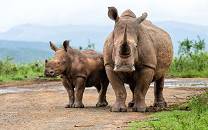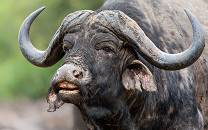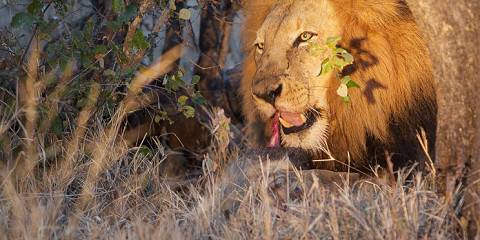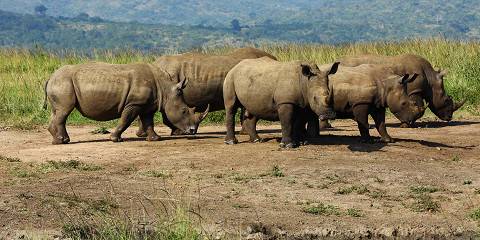Hluhluwe-iMfolozi is the flagship park of the Kwazulu-Natal province. It is also one of the oldest parks in Africa, originally created in the 1890s as a sanctuary for one last tiny population of southern white rhino. This is where the species was saved from extinction. Rhino are now very common in the park.

-
Best Time To Go
- May to September (Dry season)
-
High Season
- October to March (The park can get busy)
-
Size
- 911km² / 352mi²
-
Altitude
-
41-581m /135-1,906ft
 View Photos
View Photos
 View Photos
+24
Photos
View Photos
+24
Photos
 Open Map
Open Map
Pros & Cons
- Good wildlife viewing with the Big Five and both rhino species
- Great birding in the Wet season
- Excellent self-drive destination
- Reasonably priced rest camps in the park
- The park gets quite busy in high season
- No high-end accommodation available inside the park
- Tar trunk road creates a lack of wilderness appeal
Wildlife
Hluhluwe-iMfolozi offers great wildlife viewing and is home to all of the Big Five. Both rhino species are present and white rhino is particularly common. The thick vegetation makes it difficult to spot any of the big cats. Wild dogs have been reintroduced and are most likely to be observed when active early or late in the day.
More about Hluhluwe Imfolozi’s wildlifeScenery
The park has beautiful scenery with rolling hills, valleys, forests and grassy plains. Three rivers flow in the valleys, the most notable being the Hluhluwe river with its string of pools. Most of the vegetation is very thick, making wildlife viewing a bit more of a challenge.
Weather & Climate
Winter at Hluhluwe-iMfolozi, which lasts from May to September, is generally a warm and dry affair. The exception tends to be the mid-season period from June to August when the mornings can be quite cool. Summer (October to April), on the other hand, is hot and humid. The park also gets lashed by thunderstorms in the afternoon.
More about the weather and climateBest Time To Visit
The humidity, high-season prices and crowds, and regular downpours are three reasons why the Wet season (October to April) isn’t that appealing for a visit. You’ll likely enjoy the wildlife watching more in the Dry season (May to September) when the sky is cloud-free, and the animals make a beeline for water sources. You’ll also have the park mostly to yourself then, with the exception of school holidays, of course.
More about the best time to visit



